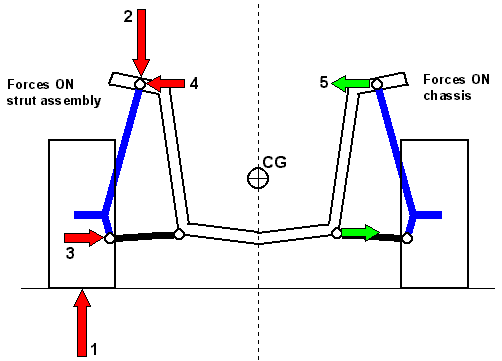The left side of the figure shows the resultant forces acting ON the strut tower assembly.
Force 1 is the road holding the car up, and force 2 is the weight of the car. Forces 3 and 4
result to stop the strut from spinning (they counter the moment produced by forces 1 & 2).
Force 4 of course has an opposite and equal reaction force which is Force 5.
This is shown on the right (in green) and is the resulting compression force on the strut tower.
Bear in mind that when the car encounters a sharp bump or dip in the pavement that the chassis
may momentarily experience 3 or 4 G's. This means that F1 and F2 in Figure 2 could equal
several thousand pounds for short periods!
F3 and F4 (and therefore F5) are much smaller, but could still be quite significant.
To calculate F5 more precisely would require some exact chassis dimensions.
In conclusion; some cars spend most
of their lives driving in a straight line. Such cars might experience the strut towers moving together
over time. Track cars spend a lot of their time cornering at over 1G. Thus a track car might see it's
strut towers spread apart over the years. This means that a strut tower bar can be under tension OR compression,
depending on the environment that the car is operated in.
